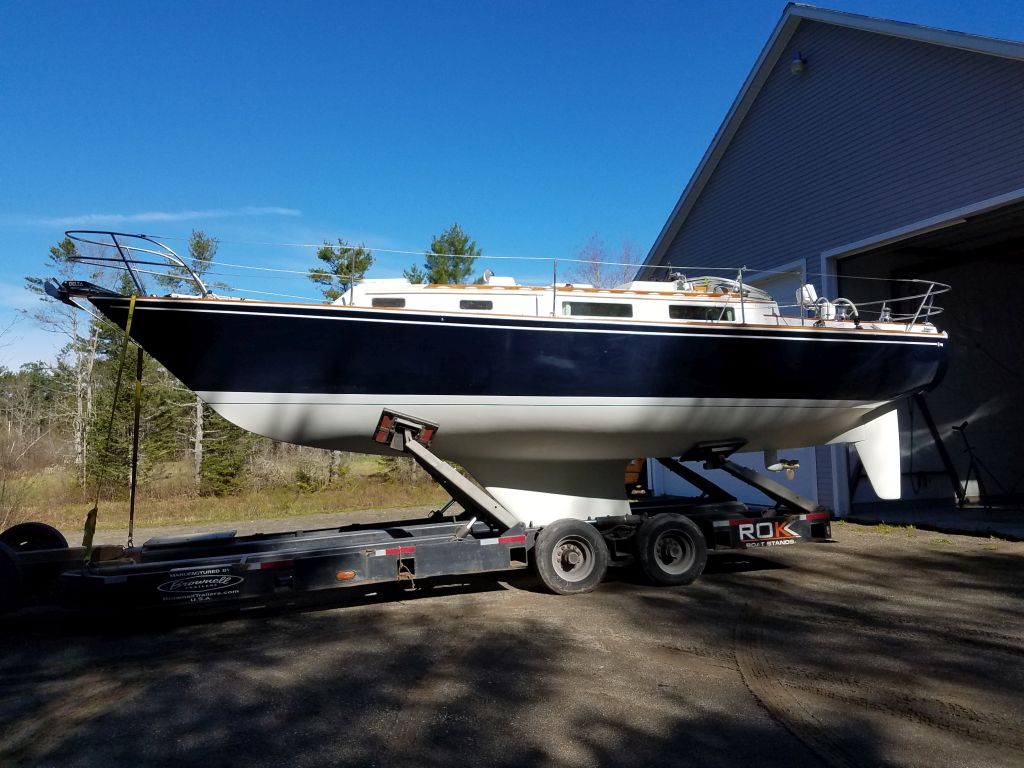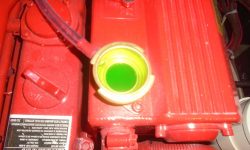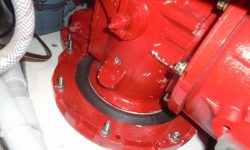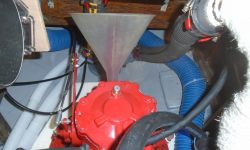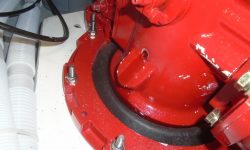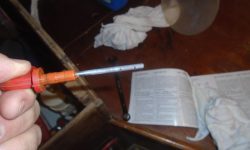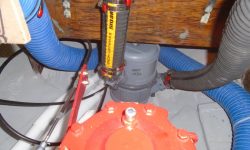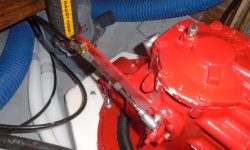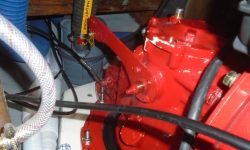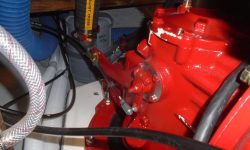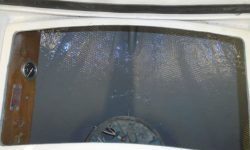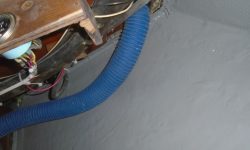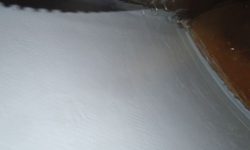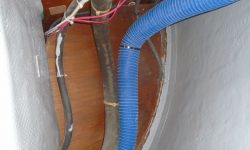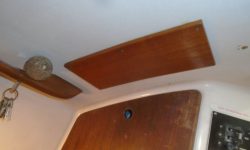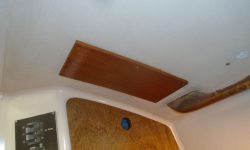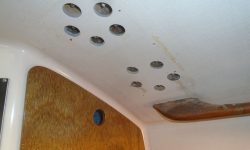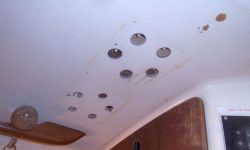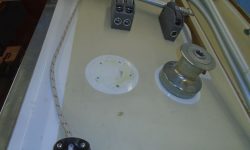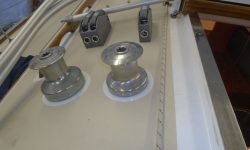November 8, 2016
Acadia 32
Tuesday
I got started in the morning with some final preparations for the engine’s first test run. I filled the coolant reservoir, checking it several times and topping off as needed as the coolant found its way into the deeper engine passages and the hoses leading to the potable water heater. I’d continue checking this level once we started the engine later. The reservoir took about a full gallon of antifreeze at this point (and more later on).
Next, I filled the oil pan. This required approximately 3.75 quarts of 15W40 oil. I’d recheck this later as well.
I bled the fuel system at the engine-mounted secondary filter, a quick and easy process with the primer bulb in the fuel line. This photo shows the bleed screw on the filter.
To fill the transmission with fluid (ATF), I first removed a drain plug on the side of the transmission (as directed), then added fluid through the large fill hole on the aft side of the transmission. After three full quarts, oil finally seeped out of the drain hole, at which point I rethreaded the plug and checked the level on the dipstick.
After completing setup of a temporary intake hose, fresh water source, and bucket. we were ready to fire the engine the first time. The owner was on hand for the event. The initial firing was slightly delayed when we found there was inexplicably no power to the engine panel in the cockpit, but I quickly traced that to the wire harness plug at the engine, which had come undone, perhaps when I was leaning over it while filling the transmission or doing some other job earlier. With the plug reconnected, the engine fired almost without touching the key, and never hiccuped. I noticed a water leak in the exhaust hose behind the engine, which is shown briefly at the end of this video and in the photo below.
I’m not much on video editing, so you get several separate and raw videos showing different parts of the process. After the initial running of about 5 minutes, we shut down so I could check the fluids. As expected, I topped off the oil level and coolant a bit. Then, it was time for a more extended test run, allowing the engine to come up to temperature.
During the final stage of the test run, we checked the prop rotation when the gear lever was moved one way or another. With no documentation as to which way was which on the transmission lever itself, and no simple way of reversing it, I’d simply hooked up the cable and hoped that pulling up on the pedestal control would be reverse and down would be forward. Inevitably, the lever was backwards, so to correct the problem the only solution in this case was to reverse the control lever and cable support bracket on the transmission–fortunately not a terrible process in this case.
Afterwards, pushing the pedestal control lever down produced righthand (forward) rotation on the prop, and vise-versa, as intended and required.
Later, with the excitement of the engine out of the way, the owner finished up work in the lazarette (work he’d requested to do), securing the blower and vent hoses and making their final connections as required, and painting out the other half of the locker. There he is, hard at work sanding in the first photo.
Meanwhile, I worked on removing two of the four cabin top winches, which the owner wanted to replace with self-tailers. Removing two teak cover plates from the cabin, I exposed the nuts and washers, which I removed easily, then, from on deck, I removed the fasteners and the two winches, quickly scraping off excess sealant from the deck as I went. The first set of new winches the owner had purchased were not what he wanted–single speed only–so installation of new winches would come a little further down the road.
Afterwards, I cleaned up the boat and shop from the engine test, dismantling the hoses, exhaust piping, and removing the excess fluid containers and so forth from the boat.
Total time billed on this job today: 6.75 hours
0600 Weather Observation:
25°, clear. Forecast for the day: sunny, high 50s


